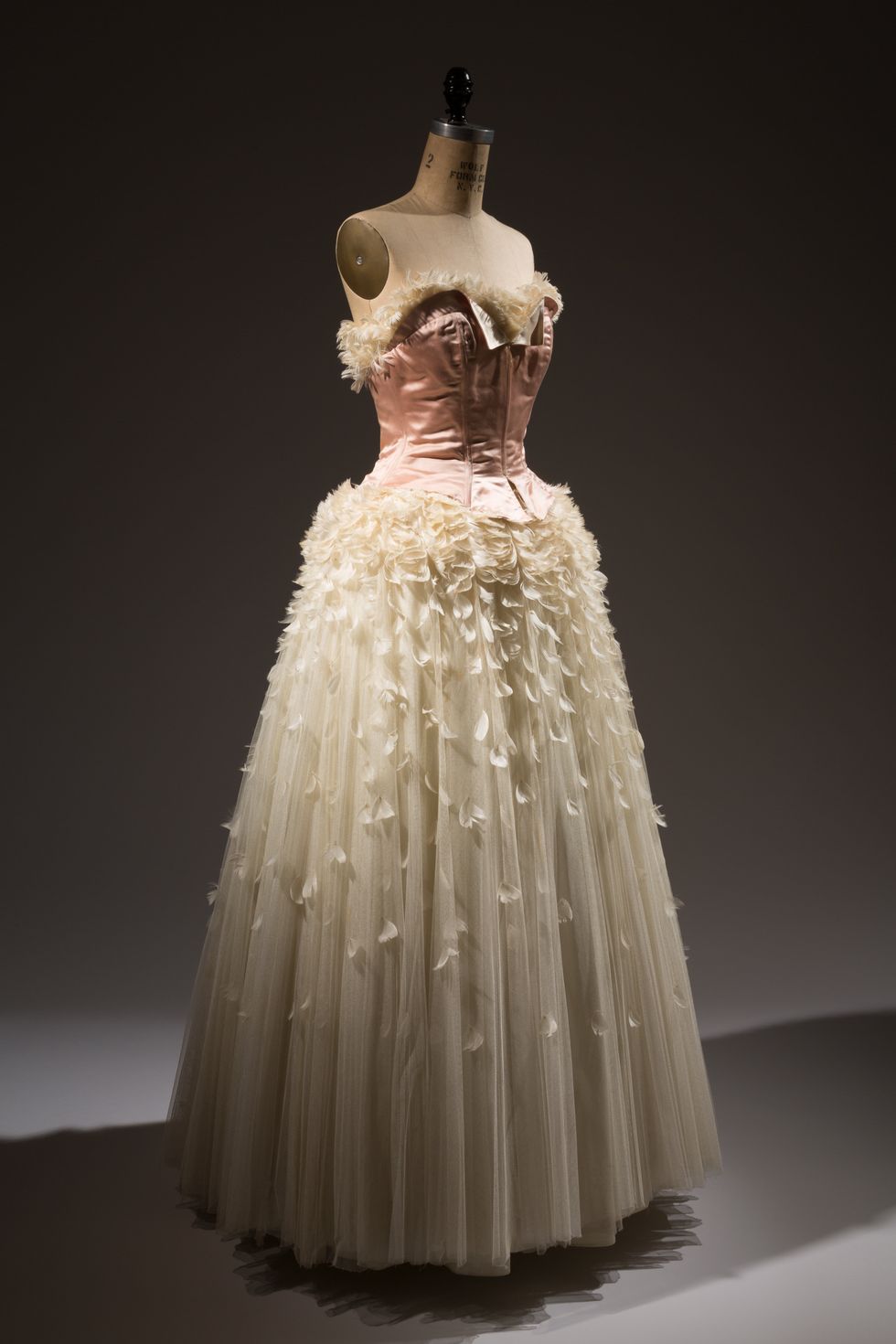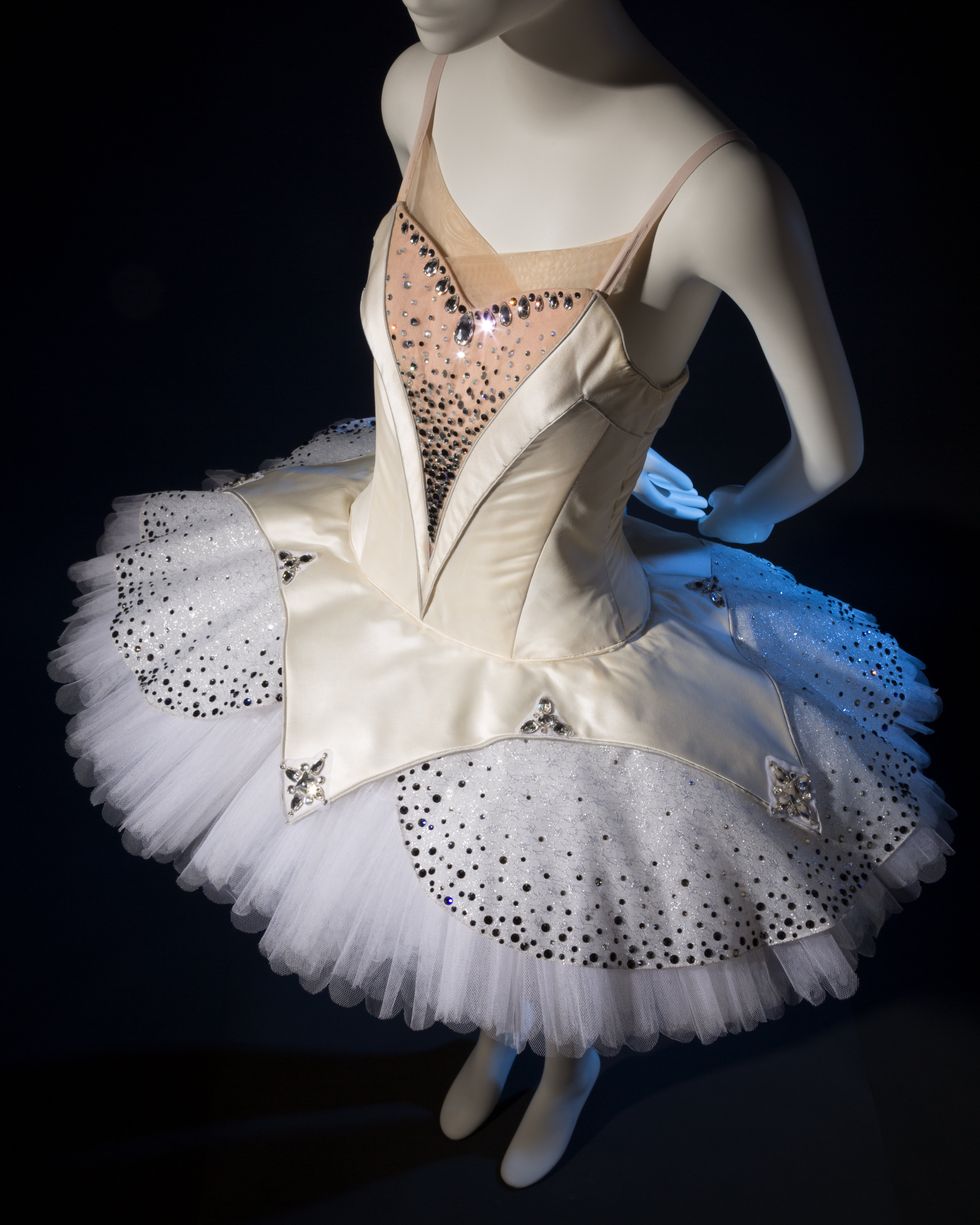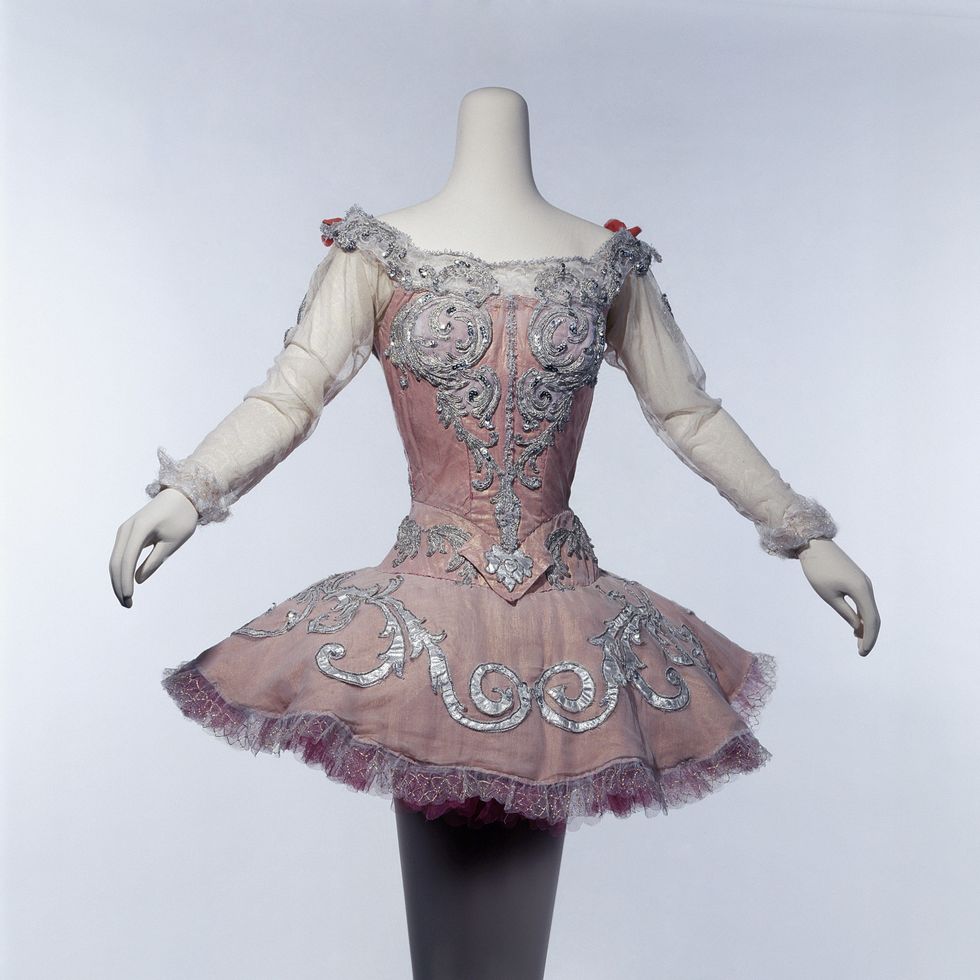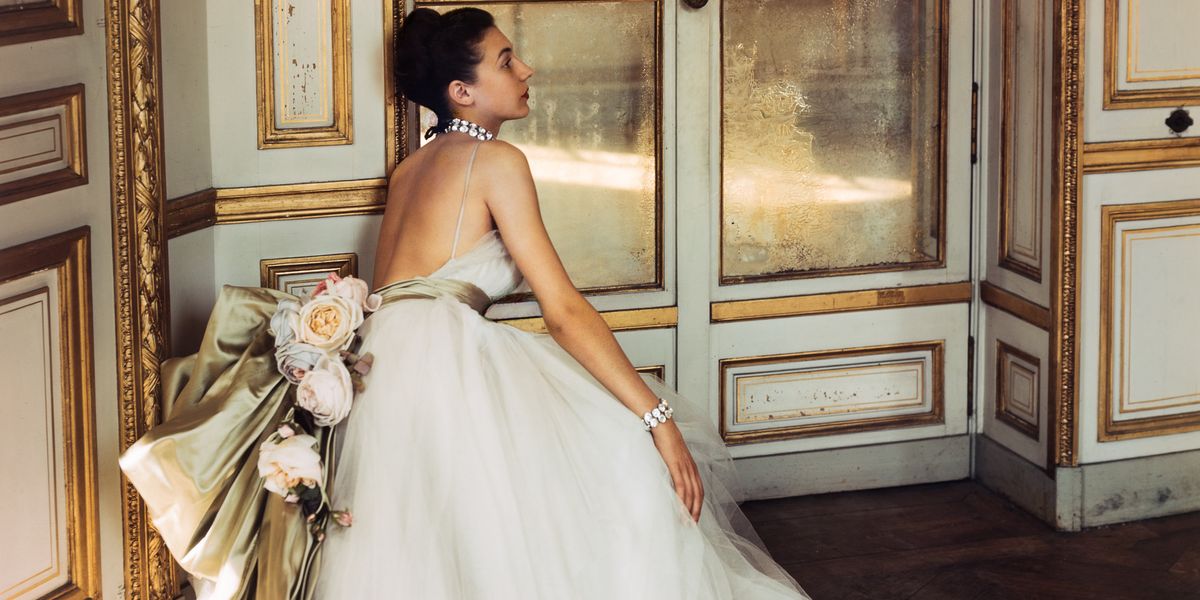Inside Fashion's Love Affair With Ballet
You couldn’t have missed Stuart Weitzman’s holiday campaign this year. Footage of Misty Copeland twirling and strutting in a black tulle number and sky-high gold heels flashed across New York City taxis and TV screens everywhere.
Ballet and fashion today seem naturally joined at the hip. But this hasn’t always been the case.
A new exhibition at The Museum at FIT running through April 18, Ballerina: Fashion’s Modern Muse, traces ballet and fashion’s intertwined mid-century history. The show reveals how the relationship between the two industries began in the 1930s and grew through the 1970s, setting the stage for their continued association today.
The exhibition begins with the iconic Jewels and Sugar Plum Fairy costumes, on loan from New York City Ballet, interspersed with high fashion items such as pointe shoe-inspired footwear. In the vast main gallery, evening gowns are placed next to tutus, outfits for the street next to those for the stage.
Most interesting are the vivid examples of the specific ways that we can see ballet affecting fashion:
Pigments have traveled from the studio to the runway.
Colors popularized by ballerinas onstage and in class made their way to the runway: “ballet pink,” of course—a color the museum uses as an opportunity to showcase progress among pointe shoe companies now incorporating a broader range of skin tones into their lines—but also blue and lilac.
The exhibition points to designer Elsa Schiaparelli’s “Sleeping” blue color. Schiaparelli used the brilliant tone in various garments, including a wool bolero jacket with black beaded detailing from spring 1940. Sleeping Beauty fans might draw the connection made here between the hue and the costumes worn in the “Bluebird” variation. The ballet had been recently restaged in 1921 by Sergei Diaghilev.
Lilac, a color historically associated with mourning, lost this connotation mid-century, thanks in part to Sleeping Beauty‘s benevolent “Lilac Fairy.”
 Elsa Schiaparelli, “Sleeping” blue wool, beaded bolero jacket, spring 1940. Lent by Hamish Bowles.
Elsa Schiaparelli, “Sleeping” blue wool, beaded bolero jacket, spring 1940. Lent by Hamish Bowles.
Courtesy The Museum at FIT
High fashion has borrowed classic ballet materials like tulle.
Materials such as tulle and feathers also began to pop up in high fashion: In the 1930s longer dresses with tulle skirts became trendy, mimicking the Romantic-era tutu style.
Coco Chanel, for example, who was a patron of Diaghilev’s Ballets Russes, created such gowns, including a stunning navy blue “Etoiles” dress from 1937. It features gold, sequined star detailing on the bodice and skirt. The piece looks like something we might see on a celebrity during awards season.
In fact, singer Maggie Rogers wore to the Grammys a vintage Chanel gown (from the Pre-Fall 2014 collection) made of filmy black silk tulle with gold star accents. Almost 80 years later, and the label is still using its ballet-inspired tulle.
 Gabrielle “Coco” Chanel, “Etoiles” navy blue tulle and sequin evening dress 1937. Lentby Beverley Birks.
Gabrielle “Coco” Chanel, “Etoiles” navy blue tulle and sequin evening dress 1937. Lentby Beverley Birks.
Courtesy The Museum at FIT
The Balmain house was particularly influenced by ballet’s aesthetics. A 1949 evening gown with a pink bodice and full, off-white skirt is replete with coq feathers. Ballet’s penchant for ballerina-bird characters—think Swan Lake, Firebird, The Dying Swan, and more contemporary creations, like Justin Peck’s The Most Incredible Thing and Alexei Ratmansky’s remake of Michel Fokine’s The Golden Cockerel—was one the fashion world noted. (The exhibit also displays the Dying Swan tutu and headpiece that Anna Pavlova wore, on loan from the Museum of London.)
 Pierre Balmain, pink and off-white evening dress with coq feathers, 1949. The Museum at FIT, Gift of Barbara Louis.
Pierre Balmain, pink and off-white evening dress with coq feathers, 1949. The Museum at FIT, Gift of Barbara Louis.
Courtesy The Museum at FIT
Fashion has also had an influence on ballet.
But the pathway of influence wasn’t just flowing in one direction. The reverse was happening too: Outside of the studio, mid-century ballerinas wore high fashion items, helping to elevate ballet as an art form and profession. We see pieces of Margot Fonteyn’s by designers including Christin Dior and Yves Saint Laurent. Couture dresses for Maria Tallchief, Alicia Markova and Alexandra Danilova show the ballerinas’ careful wardrobe curation.
In one corner of the exhibition, three garments present the most exciting example of the continued conversation between the industries. NYCB director of costumes Marc Happel’s new tutu design for Balanchine’s Symphony in C stands next to the scallop-edged 1950 Balenciaga gown that inspired it, which in turn is next to Fonteyn’s “Princess Aurora” Sleeping Beauty tutu, which likely inspired the gown. Together, the pieces show layers of influence: from costume to couture to costume.
 Mark Happel, Symphony in C costume, white silk satin, synthetic net, Swarovski crystals, 2012. Lent by New York City Ballet.
Mark Happel, Symphony in C costume, white silk satin, synthetic net, Swarovski crystals, 2012. Lent by New York City Ballet.
Courtesy The Museum at FIT
 Cristobal Balenciaga for Hattie Carnegie, pink silk tulle and satin evening dress withsilver metal embroidery, 1950. Lent by Beverley Birks.
Cristobal Balenciaga for Hattie Carnegie, pink silk tulle and satin evening dress withsilver metal embroidery, 1950. Lent by Beverley Birks.
Courtesy The Museum at FIT
 Oliver Messel, Margot Fonteyn’s “Princess Aurora” costume from The Sleeping Beauty,1960s, original designed in 1946. Lent by Victoria and Albert Museum, London.
Oliver Messel, Margot Fonteyn’s “Princess Aurora” costume from The Sleeping Beauty,1960s, original designed in 1946. Lent by Victoria and Albert Museum, London.
©Victoria and Albert Museum, London, Courtesy The Museum at FIT




